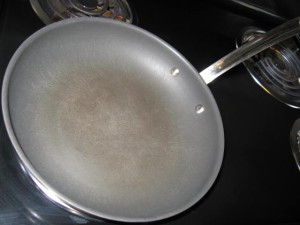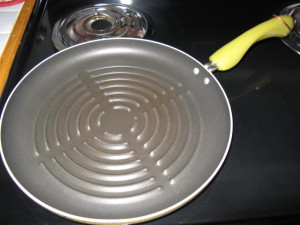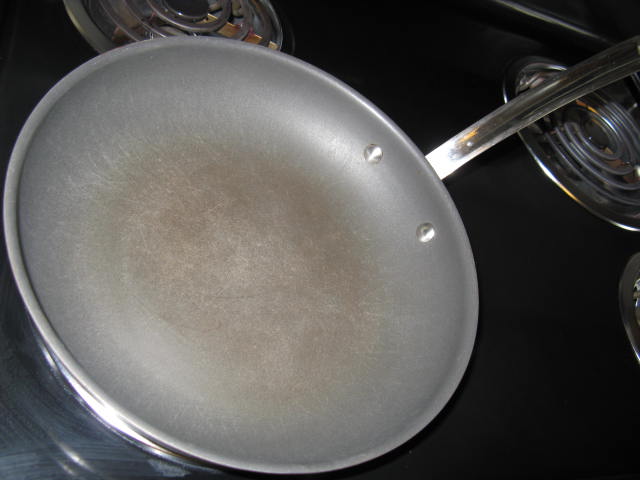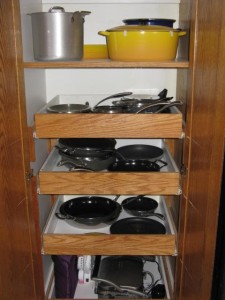 This is an extremely broad shopping category and is completely based on personal preferences. It’s very difficult to switch away from something that you have been cooking with for most of your life, particularly if it’s what everyone in your family before you also used. I find it best to start this conversation talking about my own personal experience and have discovered that a lot of folks can relate.
This is an extremely broad shopping category and is completely based on personal preferences. It’s very difficult to switch away from something that you have been cooking with for most of your life, particularly if it’s what everyone in your family before you also used. I find it best to start this conversation talking about my own personal experience and have discovered that a lot of folks can relate.
My family are a people of the nonstick nature. It’s the only type of cookware I ever experienced anywhere I ever went in my life when visiting anyone, as well as at home. Stainless cookware is for the chefs on TV that know how to make things not stick when you cook. 😉
I now know this isn’t quite exactly true; you just have to have the right stuff and know how to use it and take care of it. One of my favorite reasons for a person returning a piece of cookware was that it “burned their food”. You wouldn’t believe how often we heard that! Most issues with cookware, especially good cookware, are unfortunately the end-user’s fault, not the pans. Sorry! I burn stuff all the time in my fancy cookware. I don’t follow the rules that I tell people! But I know not to blame the pan, and have lots of tricks for getting things clean.
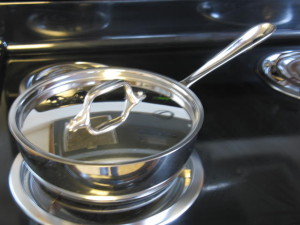 For myself, I still had to ease into trying stainless. I opted to move from nonstick, which I was sick of chipping and having to replace every few years, into a line called Chantal. Their enamel-on-steel patent essentially makes the surface into glass, so it’s non-porous, but acts like a nonstick. Most of my cookware is now Chantal, but I have some really nice clad stainless pieces that I also love.
For myself, I still had to ease into trying stainless. I opted to move from nonstick, which I was sick of chipping and having to replace every few years, into a line called Chantal. Their enamel-on-steel patent essentially makes the surface into glass, so it’s non-porous, but acts like a nonstick. Most of my cookware is now Chantal, but I have some really nice clad stainless pieces that I also love.
To make it easier to read, I am breaking up cookware into the various types of cooking surface into single blog posts, containing information about specific brands I am the most familiar with utilizing.
LINKS TO INDIVIDUAL TYPES OF COOKWARE:
BUYING TIPS, USE & CARE
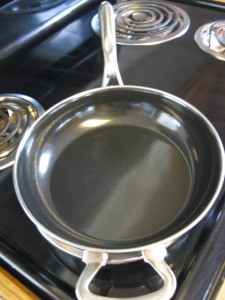
Depending on what type of pan you are using, the use and care can vary, so please click on the individual links at the bottom of this blog post to get more detailed information about your type of cookware. However, there are a few things that apply across the board that I thought everyone should know if they don’t already.
LIDS
1. Frypans never come with a lid, because if you put a lid on something you are no longer frying it, but sauteing it.
2. Saute pans have deeper, flat sides, whereas a frypan will have angled sides
3. Most cookware manufacturers realize people love having lids for everything, and therefore will make the lids that fit the saucepans also fit the frypans.
4. If all else fails, reputable manufacturers will make a lid that you can buy separately, but often you will need to find a vendor who can custom order it for you or purchase it direct from the manufacturer.
5. You can find a plethora of universal lids to purchase, too.
 STOVE HEAT SETTING
STOVE HEAT SETTING
All cookware manufacturers agree that stove manufacturers make the heat settings too hot on residential stovetops. Therefore, any use and care guide you read for any brand of cookware will tell you to not use the pan on the “high” setting. You should be able to sear perfectly on medium-high; patience is a virtue!
OTHER TIPS
1. Do not put salt in a pot of water until it comes to a rolling boil. If the water isn’t boiling yet, the salt will immediately fall to the bottom and cause pitting in the bottom of your pan.
2. Do not heat a pan without oil or butter. Generally this is said to decrease the amount of people who turn a stove on and walk away, so you can most likely get away with not following this rule if you are only doing it for a minute or less.
3. Do not use a scouring pad like Brillo on ANY type of cookware, ever! Even on stainless steel it will put deep gouges in the steel that become food traps and make the pan unsafe to utilize.
